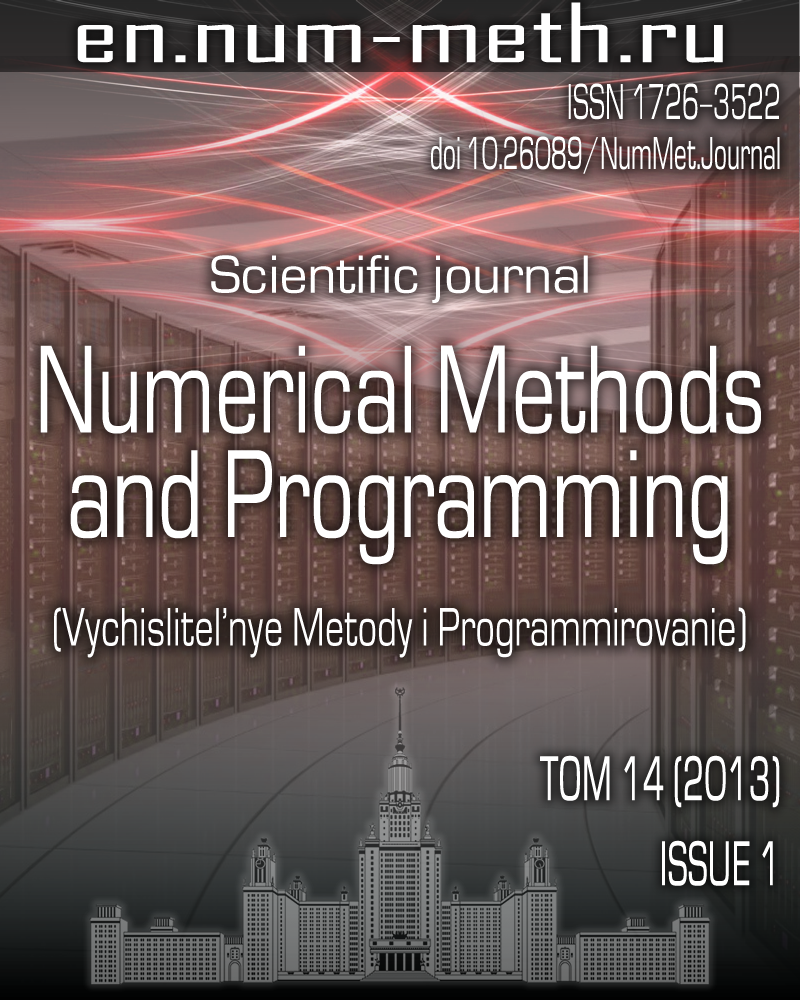Application of r-solutions to reconstructing the initial tsunami waveform
Keywords:
Abstract
A new approach to reconstructing the initial tsunami waveform in a tsunami source area is proposed. The approach is based on the inversion of remote measurements of water-level data. The tsunami wave propagation is considered within the scope of the linear shallow-water theory. The numerical simulation is based on the finite-difference technique and the method of splitting. The ill-posed inverse problem of reconstructing initial tsunami waveforms is regularized by means of a least-square inversion using the truncated SVD approach. As a result of the numerical process, an r-solution is obtained. This method allows one to control the instability of the numerical solution and to obtain an acceptable result in spite of the ill-posedness of the problem. The algorithm was verified by the numerical simulating with real bathymetry of the Peru subduction zone and synthetic data. It is shown that the accuracy of the tsunami source reconstruction strongly depends on the signal-to-noise ratio, the azimuthal and temporal coverage of assimilated tide gauge stations relative to the target area, and the bathymetric features along the wave path. The results thus obtained show that the initial tsunami waveform reconstruction by the technique presented in this paper is successful.
Published
Issue
Section
References
- Satake K. Inversion of tsunami waveforms for the estimation of a fault heterogeneity: method and numerical experiment // J. Phys. Earth. 1987. 35. 241-254.
- Satake K. Inversion of tsunami waveforms for the estimation of heterogeneous fault motion of large submarine earthquakes: the 1968 Tokachi-oki and the 1983 Japan sea earthquake // J. Geophys. Res. 1989. 94. 5627-5636.
- Piatanesi A., Tinti S., Pagnoni G. Tsunami waveform inversion by numerical finite-elements Green’s functions // Natural Hazards and Earth System Science. 2001. 1. 187-194.
- Pires C., Miranda P.M. A. Tsunami waveform inversion by adjoint methods // J. Geophys. Res. 2001. 106. 19773-19796.
- Кайстренко В.М. Обратная задача на определение источника цунами // Волны цунами. Тр. Сахалинского комплексного НИИ. Вып. 29. Южно-Сахалинск, 1972. 82-92.
- Cheverda V.A., Kostin V.I. mbr-pseudoinverse for compact operators in Hilbert space: existence and stability // J. Inverse and Ill-Posed Problems. 1995. 3, N 2. 131-148.
- Voronina T.A., Tcheverda V.A. Reconstruction of tsunami initial form via level oscillation // Bull. Nov. Comp. Center. Math. Model. in Geoph. 1998. 4. 127-136.
- Voronina T.A. Reconstruction of initial tsunami waveform by the coastal observations inversion // Bull. Nov. Comp. Center. Math. Model. in Geoph. 2002. 7. 89-100.
- Воронина Т.А. Определение пространственного распределения источников колебаний по дистанционным измерениям в конечном числе точек // Сиб. журн. вычислит. матем. 2004. 7, № 3. 203-211.
- Enquist B., Majda A. Absorbing boundary conditions for the numerical simulation of waves // Math. Comp. 1977. 31, N 139. 629-654.
- Чеверда В.А., Костин В.И. r-псевдообратный для компактного оператора // Сибирские электронные математические известия. 2010. 7. 258-282.
- Voronina T. Reconstruction of initial tsunami waveforms by a truncated SVD method // J. Inverse and Ill-Posed Problems. 2011. 19, N 4-5. 615-629.
- Марчук Ан.Г., Чубаров Л.Б., Шокин Ю.И. Численное моделирование волн цунами. Новосибирск: Наука, 1983.
- Белоносов А.С., Цецохо В.А. Вычислительный алгоритм и процедуры сглаживания функций, заданных в узлах нерегулярной сетки на плоскости // Некоторые проблемы математической физики и проблемы интерпретации геофизических наблюдений. Новосибирск: ВЦ СО РАН СССР. 1976. 6-29.

